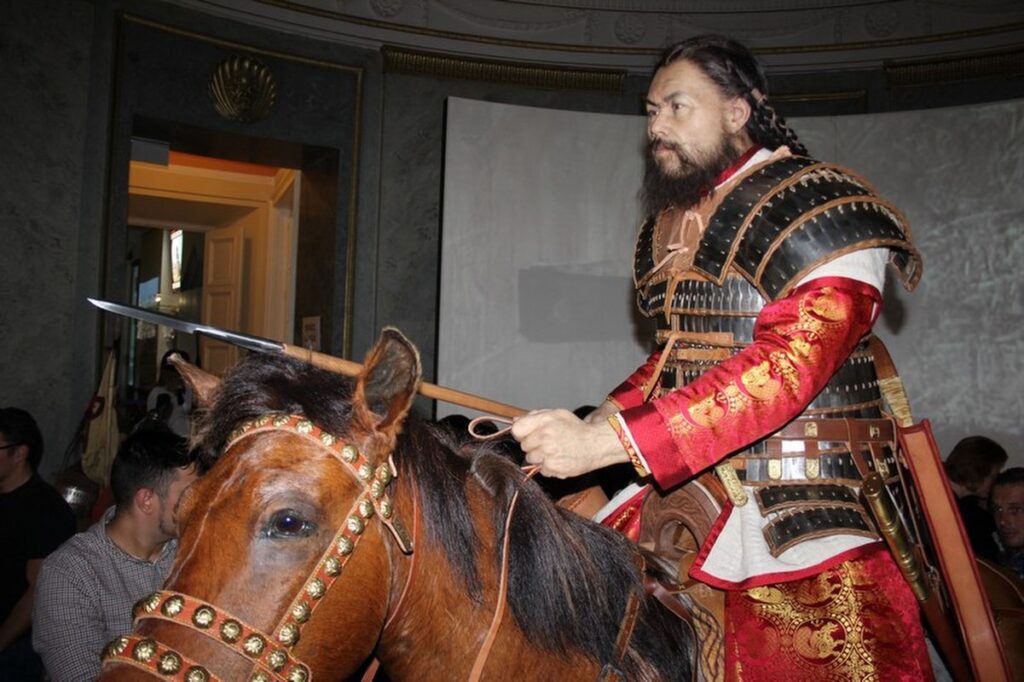According to Anonymus, a notary and chronicler of an un-named Hungarian king, the conquering Hungarians occupied the Debrecen area taking it from the Bulgarian prince Mén Maró. Thereafter it was inhabited by the Hungarians, and thus Debrecen is one of the oldest Hungarian cities. But where were its people from before and after?
According to the written records, the Romans had a military base in the Debrecen area, but even before then, and long since, many different ethnic groups have settled in the area, arriving in waves of migration at different times. This includes:-
Sarmatians
According to primary sources, the ancient Eastern European population were called Sauromats or Sarmatians and was of Iranian descent, more specifically Madai, or Mede descent. In Debrecen there is evidence of two tracks of the Csörsz ditch, built by the Sarmatians, passing through the city. In addition, there is plenty of archeological evidence of their presence in terms of burial sites. Recent archaeological digs have found objects dating back 6500 years into the bronze age, although the Sarmatian remains found in 2010 were of the 3rd-4th century.
Vandals
Based on the similarity of the names, it is thought that the Vandals were native to Norway (Hallingdal), Sweden (Vendel) or Denmark (Vendsyssel). The vandals migrated across the Baltic Sea to the territory of present-day Poland around the 2nd century. The East Germanic people of the Vandals took possession of the North African territories of the Roman Empire during the 5th century. Their name is preserved in present-day Andalusia, which was originally named al-Andalus by the Arabs (Moors) in reference to the Vandals. This suggests that the vandals settled here before migrating to Africa.
Goths
The Goths were a Germanic tribe that had a great influence on the fate of the Roman Empire (east and west) in later times. They also played a role in the history of migration in the Carpathian Basin. They had two large tribal groups, the Eastern Goths or Ostrogoths and the Western Goths or Visigoths. They originally lived in the northeastern part of Germania, where they migrated from the island of Skandia (present-day Scandinavia) (according to an old legend).
Gepids
It was a people of East Germanic origin who spoke a dialect related to Vandals and Goths. They are first mentioned in Roman sources in the 3rd century. They established their kingdoms in what is now Romania, Hungary, and Serbia.
Avars
The Avars were a nomadic people of the Eurasian steppe who migrated in the 16th century, they ruled a strong empire based in the Carpathian Basin. Their relationship with the Avars living in the Caucasus today is speculative at best.
In the 9th century, the empire fell apart into tiny states. The origin, kinship, and even ethnic composition of the Avar people are disputed. They are thought to have originated in Asia and China, the Xinjiang, the Hephthalites, and the Suzuan peoples are thought to have established the empire.
In various historical records of the Carpathian Basin, three major migrations of the Asian Avars are recorded; we can distinguish between early Avar and late Avar. Some of the late Avars are considered Hungarians by the theory of double conquest (onogur Hungarians).

(Pictured at Deri Museum 2020: Kagan Warrior)